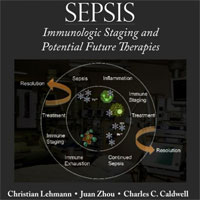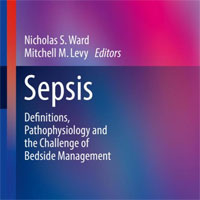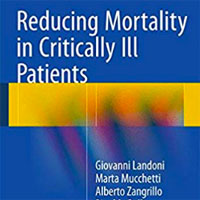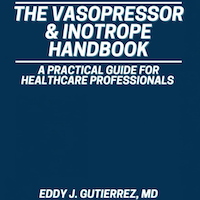Tag: NIV
Noninvasive Ventilation for Preoxygenation during Emergency Intubation
Among critically ill adults undergoing tracheal intubation, preoxygenation with noninvasive ventilation resulted in a lower incidence of hypoxemia during intubation than preoxygenation with an oxygen mask. Among the 1,301... read more
Two weaning strategies for NIV in COPD patients with ARF
Non-Invasive Ventilation (NIV) is a crucial therapy for managing acute exacerbations of Chronic Obstructive Pulmonary Disease (COPD) with hypercapnic respiratory failure. Research has shown that NIV can decrease the rate... read more
Tezepelumab in a case of severe asthma exacerbation and influenza-pneumonia on VV-ECMO
We present a case of 43-year-old male patient with broadly by Omalizumab, Mepolizumab and Benralizumab pretreated allergic asthma, who suffered a near fatal exacerbation, triggered by an influenza A infection. Due to... read more
HFNC vs. CPAP in COVID-19 Patients with ARDS in ICU
Acute hypoxic respiratory failure in coronavirus disease 2019 (COVID-19) pneumonia has been treated with oxygen delivered by oxygen masks and non-invasive ventilation (NIV) with continuous positive airway pressure (CPAP),... read more
Noninvasive Ventilation in Sleep Medicine and Pulmonary Critical Care
This book is an introduction to a comprehensive analysis of recent advances and clinical research in noninvasive mechanical ventilation (NIV) in Pulmonary, Critical Care, and Sleep Medicine. The objective of the book is to... read more
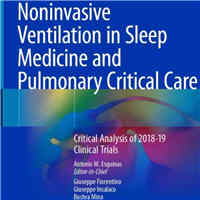
ReddyPort Non-Invasive Ventilation Device Cleared By FDA
ReddyPort announced today that the US Food and Drug Administration (FDA) granted 510(k) premarket clearance for the ReddyPort elbow device used in non-invasive ventilation (NIV). "ReddyPort's patented elbow is central... read more
COVID-19 in Solid Organ Transplant Recipients
Solid Organ Transplant (SOT) recipients are at high risk of severe coronavirus disease-2019. Prior to the availability of vaccination, passive immunotherapies and effective antiviral therapeutics, the outcomes of COVID-19... read more
Dexmedetomidine, Almost As Many Uses As There Are Letters
There is literature to support the use of dexmedetomidine in patients with sympathomimetic toxidrome. It may be a reasonable approach to utilize Dex, with or without a bolus, while closely monitoring these patients in an... read more
High Flow Nasal Cannula: Physiological Effects and Clinical Applications
This book presents the state of the art in high-flow nasal cannula (HFNC), an oxygen therapy technique that has recently proven to be a very promising approach to supporting respiratory function in several medical fields. In... read more
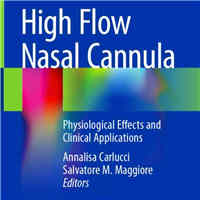
Nasal High-Flow Therapy during Neonatal Endotracheal Intubation
Among infants undergoing endotracheal intubation at two Australian tertiary neonatal intensive care units, nasal high-flow therapy during the procedure improved the likelihood of successful intubation on the first attempt... read more
HFNO Alone or Alternating with NIV in ARF Patients
In critically ill immunocompromised patients with acute respiratory failure (ARF), the mortality rate did not differ between HFNO alone and non-invasive ventilation (NIV) alternating with high-flow nasal oxygen (HFNO). However,... read more
Chronic Obstructive Pulmonary Disease, An Issue of Clinics in Chest Medicine
This issue of Clinics in Chest Medicine, guest-edited by Dr. Gerard Criner and Dr. Bartolome Celli, is focused on Chronic Obstructive Pulmonary Disease. Topics discussed in this issue include but are not limited to: COPD... read more
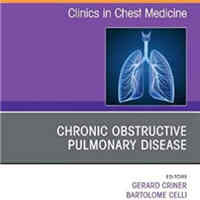
Optimal Respiratory Support for COVID-19 Patients
Noninvasive respiratory support is an essential component of critical care. Both noninvasive ventilation, with its different interface types and modes (including helmet and face masks), and high-flow nasal oxygen (HFNO) are... read more
Estimated and Measured Post-tetanic Count Effect
Comparison of two pharmacokinetic–pharmacodynamic models of rocuronium bromide during profound neuromuscular block. Our findings indicate that using plasma concentrations of rocuronium bromide estimated with either of... read more
Non-Invasive Ventilation and Weaning: Principles and Practice, Second Edition
Now in full-colour, this eagerly-anticipated second edition continues to be the most comprehensive resource available on non-invasive ventilation (NIV), both in the hospital and at home. Reflecting a global perspective with... read more
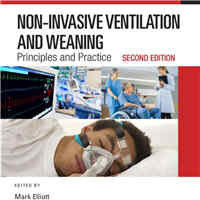
Noninvasive Ventilation and Outcomes in Bronchiolitis
In a large cohort of infants at children’s hospitals, noninvasive and invasive ventilation increased significantly from 2010 to 2018. Hospital-level noninvasive ventilation utilization was not associated with a reduction... read more
Facemask vs. Helmet – Noninvasive Ventilation
We use Noninvasive ventilation (NIV) to treat various disease processes, such as acute hypercapnic and hypoxemic respiratory failure, post-extubation failure, and neuromuscular diseases. Data supports NIV use in some conditions,... read more
Breath-holding as a Novel Approach to COVID-19 Risk Stratification
Despite considerable progress, it remains unclear why some patients admitted for COVID-19 develop adverse outcomes while others recover spontaneously. Clues may lie with the predisposition to hypoxemia or unexpected absence... read more
Protecting The Injured RV in COVID-19 ARDS
The abnormal interaction between the right ventricle (RV) and pulmonary vasculature in various disease states is associated with adverse clinical outcomes. Impaired RV physiology in acute respiratory distress syndrome (ARDS)... read more
Non-invasive Respiratory Support and P-SILI in COVID-19
Coronavirus disease 2019 (COVID-19) pneumonia is associated with hypoxemic respiratory failure, ranging from mild to severe. Due to the worldwide shortage of intensive care unit beds, a relatively high number of patients... read more
NIV After Early Extubation Reduces Total Days Spent on i-MV
Patients recovering from an episode of hypoxemic acute respiratory failure (hARF) may benefit from a weaning strategy based on early extubation followed by immediate noninvasive ventilation (NIV) application. Compared... read more
Prone Positioning Non-intubated COVID-19 Patients with Severe Hypoxemia Was Safe
In a small sample, prone positioning non-intubated COVID-19 patients with severe hypoxemia was safe; however, many patients did not tolerate prolonged durations. Although patients had improved oxygenation and respiratory... read more





